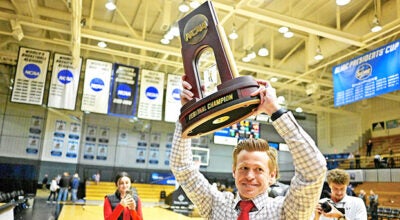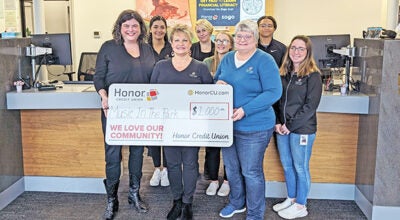Consultants share results of transformation visioning sessions
Published 9:43 am Wednesday, April 20, 2016
After several months of brainstorming, the vision of what a transformed Dowagiac Union High School could offer students, staff and the community at large has come into focus.
Design consultants for Dowagiac Union Schools’ upcoming $37 million building renovation project shared the results of the recent visioning sessions for updates to the local high school during Monday’s meeting of the district board of education. Based on feedback provided by school staff, administrators and students, along with others in the community, the brainstorming project will provide direction to architects with Seven Generations as they come up with floor plans for the renovation project.
The visioning portion for the high school, the first of five district school buildings slated for updates after the passage of the $37 million pair of bonds last November, has taken the past six weeks or so, said Scott Winchester, the lead architect for the project.
“This gives us a great basis for designing the transformation of the high school,” Winchester said. “We will go into schematic design and all the other normal phases of the project with the intent to have the documents for the redesign of the high school out for bid later this year, in November.”
Leading discussions the past several weeks has been Greg Monberg, the director of design research with architecture and engineering firm Fanning Howey. Monberg, who specializes in school planning, had participants of the visioning process identify key priorities they wished to see from a redesigned high school building, he said.
“It was a very collaborative, interactive and iterative process,” Monberg said. “Everybody was given a chance to share their ideas about what should happen at the new renovated school.”
One of the major goals participants wanted to see from the redesign was improvements to the flexibility of the existing building, to reduce congestion in the academic wings and to provide spaces for student learning besides just the standard classroom with four fixed walls, Monberg said.
Other areas the group targeted were transforming the library into a more active learning and research center, changing the electives wing into a collaborative learning community and adjusting the size of classrooms in the core academic learning area, the designer said.
Near the end of the process, the participants voted on several different possible floor space plans, each emphasizing different priorities expressed throughout the visioning process.
“On one hand, the [proposed design] is an aspiration goal, but this document also becomes a measuring stick,” Monberg said. “At the end of design development, it would be a good idea to go back and compare these designs and aspirations with what is turned out in the final design to make sure it reflects what we wanted as a group.”






